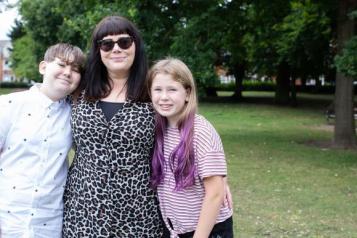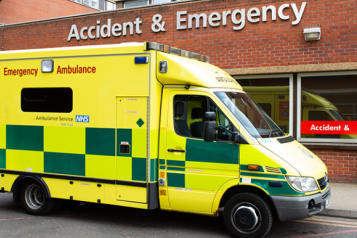National survey highlights decline in people’s experience of urgent and emergency care.

Published today (Tuesday 25 July) by the Care Quality Commission (CQC), the survey reveals the responses from patients who attended either a major consultant-led A&E department (Type 1) or an urgent treatment centre or minor injury unit (Type 3) run directly by one of 122 acute hospital trusts in England during September 2022.
Although people surveyed remained broadly positive about their interactions with staff, this year’s results show a decline in positivity for every question asked where a historical comparison is available.
Most people (80%) surveyed who had visited a Type 3 department said they ‘definitely’ had enough time to discuss their condition with the healthcare professionals treating them (down from 85% in 2020), and a large number (84%) of those who used a Type 3 service said that staff ‘definitely’ listened to what they had to say (no significant change compared to previous years).
For respondents who had attended a Type 1 department in 2022, 73% felt that doctors and nurses ‘definitely’ listened to them, compared with 79% in 2020. And over two thirds (71%) said they ‘definitely’ had confidence and trust in staff - which is still high, but a lot lower than the 77% who said this in 2020.
Responses to questions about other aspects of care including fundamental issues like waiting times, availability of staff, pain management and information provided at discharge showed an even more marked decline.
The number of Type 1 patients who reported waiting more than an hour to first speak to a doctor or nurse increased to 32% in 2022 (compared with 15% in 2020 and 19% in 2018). And in 2022, the proportion who said they waited more than 4 hours to be examined in a Type 1 service more than trebled to 17% - up from 4% in 2020 and 5% in 2018. Over half of patients (56%) who said that they needed help with their condition or symptoms while they were waiting to be treated in A&E said they were not able to get that help from staff (up from 45% in 2020).
In Type 3 services, 10% of people with an appointment said they waited more than 2 hours to first speak with a health professional (compared with 3% in 2020 and 4% 2018), and 15% percent of those with an appointment said they waited more than 2 hours to be examined (up from 5% in 2020 and 3% in 2018).
Only 57% of Type 1 patients said that they were ‘definitely’ involved as much as they wanted to be in decisions about their care and treatment in 2022 - compared to 63% who said this in 2020 and 65% who said this in 2018. Similarly, there was a decline in the number of people who said if they had any anxieties or fears about their condition or treatment, a doctor or nurse in the A&E department ‘completely’ discussed this with them – falling from 51% in 2020 to 48% in 2022.
Across both service types, less than half (45% of Type 1 respondents and 49% of Type 3 respondents) felt that they ‘definitely’ had enough privacy when discussing their condition with the receptionist. This compares with 55% and 59% for Type 1 and Type 3 services in 2020. And fewer Type 1 patients ‘definitely’ had enough privacy when being examined and treated - 78% in 2022 compared with 84% in 2020.
Only 53% of Type 1 patients and 69% of Type 3 patients who had communication needs (language needs or communication needs related to a disability, sensory loss, or impairment) said staff ‘definitely’ helped with their needs - with 27% of Type 1 patients and 20% of Type 3 patients with those needs reporting that staff gave them no help.
Pain management was another area of care highlighted as an increased concern. Fifty-one per cent of Type 1 respondents and 58% of Type 3 respondents felt that staff ‘definitely’ did everything they could to help control their pain. This compared with 60% and 63% for Type 1 and Type 3 services in 2020.
As has been the case in previous years, the 2022 results also showed scope for improvements at discharge from both A&E and Type 3 departments. Only 46% of Type 1 patients surveyed said they were ‘completely’ told what symptoms to watch for when they were at home (down from 53% in 2020) and 51% of Type 1 patients and 65% of Type 3 patients were ‘definitely’ given enough information to care for their condition after leaving the department. This is compared with 60% and 70% for Type 1 and Type 3 services in 2020.
People surveyed who had attended A&E were more likely to report a negative experience of care if they identified as frail, if they were disabled, if their visit lasted longer than 4 hours or if they had been to the same A&E for the same condition within the previous week.
Dr Sean O’Kelly, CQC’s Chief Inspector of Healthcare, said:
These latest survey responses demonstrate how escalating demand for urgent and emergency care is both impacting on patients’ experience and increasing staff pressures to unsustainable levels. Staff are working extremely hard amidst challenging circumstances. We see that reflected in these results, but also during our inspections and monitoring of services and in the discussions with clinicians in CQC’s emergency medicine specialist advisor forum.
“The last urgent and emergency survey was carried out shortly before the second peak of the pandemic when A&E and Type 3 attendances were significantly lower than pre Covid levels – so the decline in positive feedback compared to then must be seen in that context. But it remains extremely concerning that for some people care is falling short, and we cannot afford to ignore the long term decline shown in relation to issues like waiting times, information provided when people leave to go home, access to pain relief and emotional support.
“As we made clear in our annual State of Care report last year, the rise in demand for urgent and emergency care and challenges staff face in meeting that demand is a symptom of a much wider capacity and access issue across health and social care. Urgent and emergency care requires the support of the whole hospital and the surrounding local health and social care system. Without that support and without a more co-ordinated approach, more and more people whose needs can be better met by other services will continue to seek help at emergency departments and urgent care centres.
“I encourage NHS trusts to reflect on their individual results to identify what changes they might be able to make to help drive improvements, and to use CQC’s People FIRST online resource as a support. But there is also a wider and very urgent need for Integrated Care Systems to ensure that local services are set up in a way that is designed around the needs of the population they serve, and that those services are supported to come together to help manage the increasing demand and ensure the best quality of care for all.”
In addition to a report on the findings for England, CQC has published the results for each of the 122 individual trusts that took part so that people can see how their local services performed, and a report identifying those trusts that have performed better or worse across the survey overall.
CQC will continue to use the findings as part of its wider monitoring of the quality of hospital services and to plan and target its inspections.

